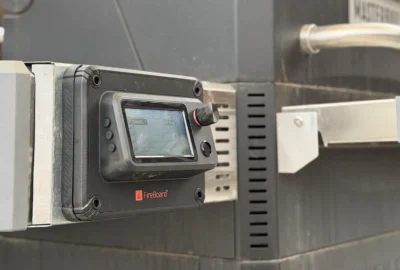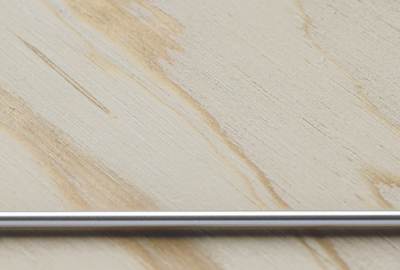Science
Are White Cars Really Cooler?
It is not often that you hear the words “Heatwave” and “Fun” used in the same sentence unless you work for a company like FireBoard that specializes in temperature tracking!

Alec for a social media post, used a FireBoard 2 drive to read a high temperature of 186ºF in his car, which is incidentally painted dark red. Check out his post here.
While this week in Kansas City we’re getting our first taste of fall weather with morning lows in the 50s and daytime highs this week in the 70s. A couple of weeks ago it was a completely different story, as we were in the middle of a heatwave. FireBoad has a Slack channel for inner office random chat. With the high temps, some of my co-workers were reporting how the temperatures inside their cars. One day in particular, Harold reported over 126ºF in his car, Alec had recorded 186ºF on his dashboard with a FireBoad 2 Drive, and Paul was greeted with the unfortunate surprise of his rearview mirror dangling by its connection cord. Apparently, the extreme heat was too much for the adhesive that held the mirror to the windshield.

One hot August day after work at FireBoard, Paul found his rearview mirror dangling by its connection cable. No doubt due to high temperatures inside his parked, black car.
This got me thinking about different ways to control the heat, like parking in a shady spot or placing a sunshade on your windshield. This inspired my hypothesis for this blog, how much does the paint color of a car impact the temperatures inside? My car is dark navy blue, how much cooler would it be in the afternoon going home, if it was painted white instead?
It was time to put some FireBoard tech to work and do some testing of our own. My co-worker drives a white Passat, and I have a dark blue Jetta. Not identical, but very similar in construction, insulation, glass tint, etc.
The Setup
We parked our cars side by side, both facing south, with no shade from the sun. All windows and doors were closed, and no window shades were used.

Probe on the dash of the dark car. A standard FireBoard2 ambient probe was used to measure dash temperatures.

The FireBoard2 ambient probe on the dash of the white car. Both cars had a dark-colored dashboard.
Both cars got a FireBoard 2 with one probe resting on the dashboard, and a second placed on the floor. On my car I added a third probe measuring the temperature of the outside air. In both cars, the dashboard probe received direct sunlight and the probe on the floor was shaded from the sun.

At the Left probs of the dark blue car. One ambient probe on the roof, and another in the the front passenger footwell. At right, a FireBoard 2 in a similar position in the white car.
The Results
After a full day in the summer sun, the results supported simple science that just as dark colors absorb heat, white and lighter colors reflect the UV and IR radiation that makes sunshine so hot. Proven with a FireBoard, cars with lighter paint colors will create less heat when parked in the sun. Click here for the full session.

A 14.2ºF difference, with the high temp in the darker car. The two temps were taken from the front passenger footwell of sample cars. DK Floor was a dark blue 2012 VW Jetta and Wh Floor is from a white 2021 VW Passat.

The dashboard temperatures show a difference of 88.7ºF. This is fascinating since the significant difference between these two readings was the color of the paint of the car. Both cars had probes in direct sunlight, on black dashboards, parked side by side, yet the difference between the floor temps above was less than 25% of dashboard readings!
Healthy Respect
This oven-level amount of heat in the car I drive my son around in gave me a renewed respect for the summer sun. With my interest piqued, I dug a little and put together this list of “dangers” you will face in a hot car, some obvious some not-so-obvious.
- Heatstroke: The most immediate risk is heatstroke, especially for children and pets left in hot cars. Temperatures can soar to lethal levels within minutes, leading to life-threatening situations.
- Dehydration: High heat can cause rapid dehydration, affecting not only the driver but also the passengers. Dehydration can impair cognitive function and decision-making, increasing the risk of accidents.
- Burns: Hot surfaces in a car, such as seatbelts, steering wheels, and metal buckles, can cause burns on the skin upon contact.
- Damaged Belongings: Extreme heat can damage or melt items left in the car, including electronics, medications, and even cosmetics.
- Reduced Alertness: Prolonged exposure to high temperatures can lead to fatigue and reduced alertness, which is dangerous while driving.
To mitigate these dangers, never leave children, pets, or vulnerable individuals in a parked car, even for a short period. Park in shaded areas when possible, use sunshades, and ensure proper ventilation. Staying hydrated and aware of the temperature inside the car is crucial for safe summer driving.
What is more, the weather doesn’t have to be at extremes. This article from Consumer Reports found that on a day when it was 61ºF it took only one hour for the temperature inside a closed car to reach 105ºF.









6 Comments
Justin
This was a great thing to try with the fireboard, I would have never even considered it. Thanks for doing this.
Would be great if you had identical vehicles though except for the color. I have to imagine the type of glass on each vehicle and the size of the windows will make a difference in the temps. Also would be interesting to see how much of the difference the interior colors make…
Also I totally want to see how the ribs cooked in there would turn out 🙂
Dennis Nichols
It would be interesting to learn if your fan could help cool down the vehicle interiors by moving the air around.
M
This is a fun experiment. ~14 deg delta in footwell seems reasonable. The large difference in probe temps on the dashboard makes me wonder how different the laminated glass used on the windshield is between the two VW’s.
Jeff Nichols
Thanks for your comment M! It’s definitely worth looking into.
Will Pryor
Now that we know a dark car can sustain 205 degree temperatures over the course of a day, I’d like you to cook a rack of ribs in your car the next time we have a hot day.
Jeff Nichols
Funny you should say that Will, we were just talking about that! I’ll try to work it in. 🙂